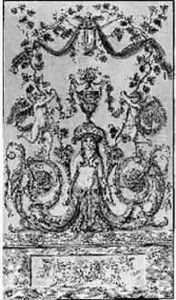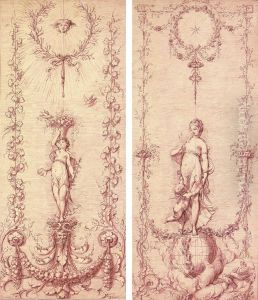Gilles Paul Cauvet Paintings
Gilles Paul Cauvet was a renowned French sculptor and decorator who played a significant role in the artistic movements of the 18th century. Born on July 4, 1731, in Aix-en-Provence, France, Cauvet was immersed in the flourishing art scene that characterized the period known as the Ancien Régime, prior to the French Revolution.
Cauvet moved to Paris to pursue his artistic career and quickly gained recognition for his talent. He was admitted to the Royal Academy of Painting and Sculpture in 1755, a prestigious institution that dictated the artistic standards of the time. Cauvet's work was notable for its classical style, which was defined by its adherence to the principles of harmony, proportion, and the beauty ideals of antiquity.
He became particularly well-known for his decorative arts and was considered a master of rococo design, contributing significantly to the evolution of the Louis XV and Louis XVI styles. Cauvet's craftsmanship was sought after by the French aristocracy, and he worked on various significant projects, including the decoration of the Hôtel de Soubise and the Hôtel d’Évreux (now the Élysée Palace).
Despite his success, Cauvet's life was not without challenges. The socio-political upheavals leading to the French Revolution impacted the demand for luxury goods and services, which affected artists and craftsmen like Cauvet. Nevertheless, he maintained his status as an influential artist until his death.
Gilles Paul Cauvet died on May 4, 1788, in Paris. His legacy continued through the appreciation of his works, which are considered fine examples of French decorative arts from the late Baroque and rococo periods. Cauvet's contributions to the design and ornamentation of interiors have been studied and admired by art historians and enthusiasts, cementing his place in the history of French art.

